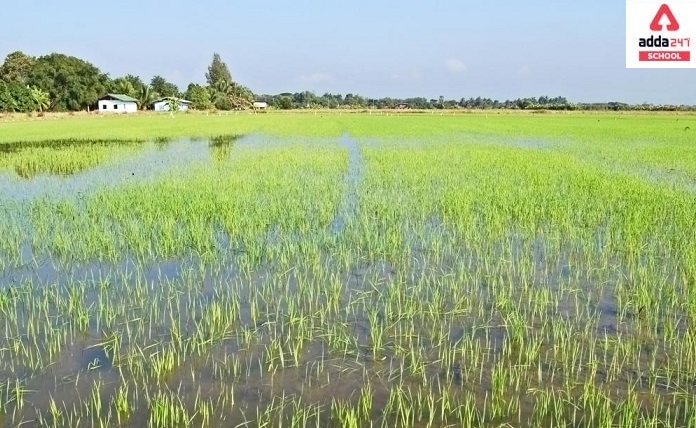What is irrigation?
What is irrigation? As explained here, A tasteless and odorless substance, ‘Water’ plays a really important part in the survival of living beings. Be it, humans or plants, or any other living creature, water is needed for life.
The artificial technique of applying controlled amounts of water to land to aid in the development of crops is what the process of irrigation can be described as. Irrigation not only aids in the growth of agricultural crops, but the maintenance of landscapes, and the revegetation of damaged soils. Irrigation also has other uses in crop cultivation, such as frost protection, weed suppression in grain fields, and soil compaction prevention. When compared to overhead irrigation, micro-irrigation requires less pressure and water flow.
Read About Special Economics Zone
What is irrigation?- Describe two methods of irrigation
Irrigation types differ in how water is delivered to the plants. The goal is to apply the water to the plants as evenly as possible, ensuring that each plant receives the exact amount of water it requires. Irrigation can also be classified as either supplemental to rainfall, as it is in many regions of the world, or as “full irrigation,” in which crops are rarely dependent on rainfall. Full irrigation is uncommon, occurring only in arid environments with minimal rainfall or when crops are cultivated in semi-arid regions outside of rainy seasons.
Surface Irrigation
Surface irrigation is also known as gravity irrigation. This is the oldest and most widely used type of irrigation, having been used for thousands of years. Water travels across the surface of agricultural lands in surface irrigation systems to saturate them and permeate into the soil. Water travels as a result of gravity or the land’s slope. Furrow, border strip, and basin irrigation are three types of surface irrigation. When irrigation results in flooding or near flooding of cultivated land, it is sometimes referred to as flood irrigation. In most parts of the world, surface irrigation has long been the most prevalent method of irrigating agricultural land.
Micro-irrigation
Micro-irrigation is also known as localised irrigation, low volume irrigation, or trickle irrigation. It is a technique in which water is dispersed under low pressure through a piped network in a pre-determined pattern and applied as a small discharge to each plant or to the area around it.
Drip irrigation, often known as trickling watering, accomplishes exactly what it says on the tin. Waterfalls in this system one drop at a time, right where the roots are. Drop by drop, water is given to or near the root zone of plants. This kind of irrigation may be the most water-efficient.
Sprinkler irrigation
Water is routed to one or more central sites inside the field and distributed by overhead high-pressure sprinklers or guns in the sprinkler or overhead irrigation. A solid-set irrigation system is one that uses sprinklers, sprays, or guns that are positioned overhead on permanently installed risers. Rotors are high-pressure rotating sprinklers that are powered by a ball drive.
Sub irrigation
In locations with high water tables, sub-irrigation has been practised in field crops for many years. It’s a technique for artificially increasing the water table and moistening the soil from below the root zone of plants. These systems are frequently integrated with drainage infrastructure and are positioned on permanent grasslands in lowlands or river valleys. It can control the water table by adjusting the water level in a network of ditches using a system of pumping stations, canals, weirs, and gates.









 AILET 2026 AIR 1: Check Full Toppers Lis...
AILET 2026 AIR 1: Check Full Toppers Lis...
 AILET Result 2026 OUT, How to Download S...
AILET Result 2026 OUT, How to Download S...
 CUET PG Crash Course 2026: Subject-Wise ...
CUET PG Crash Course 2026: Subject-Wise ...














